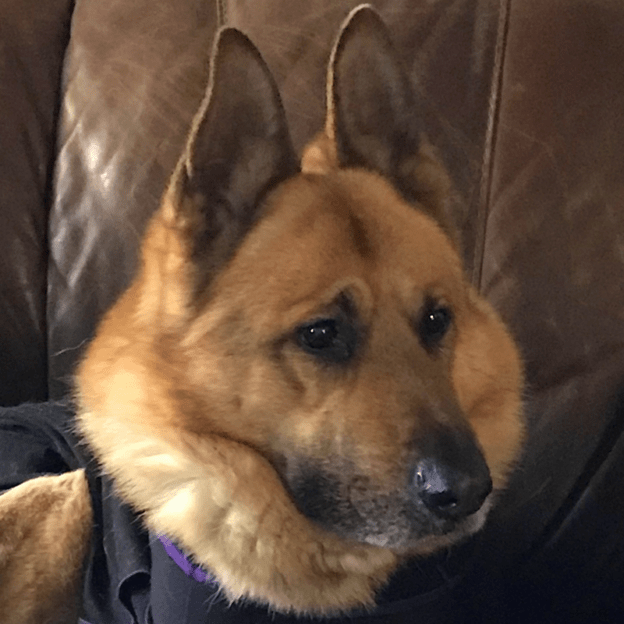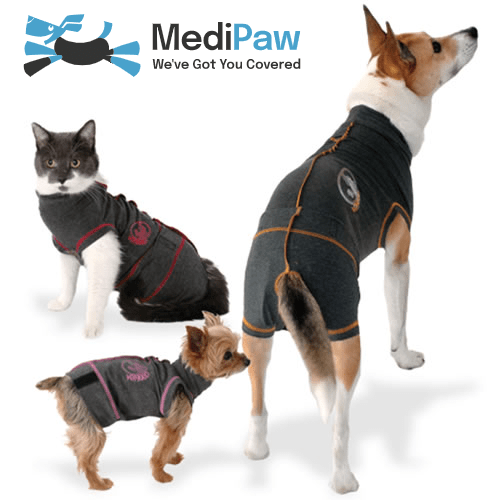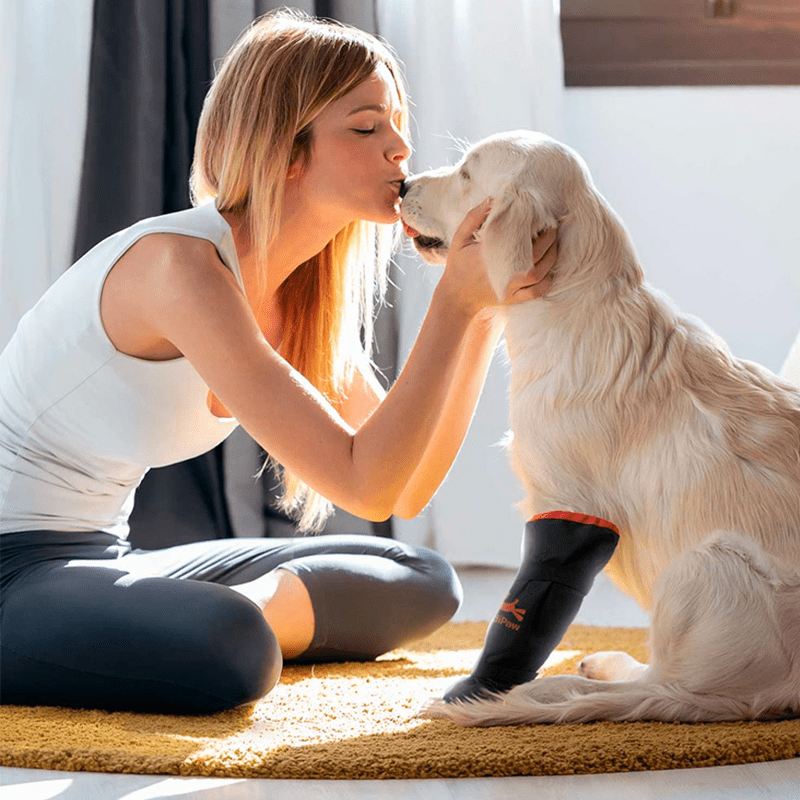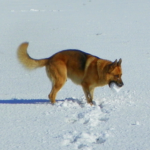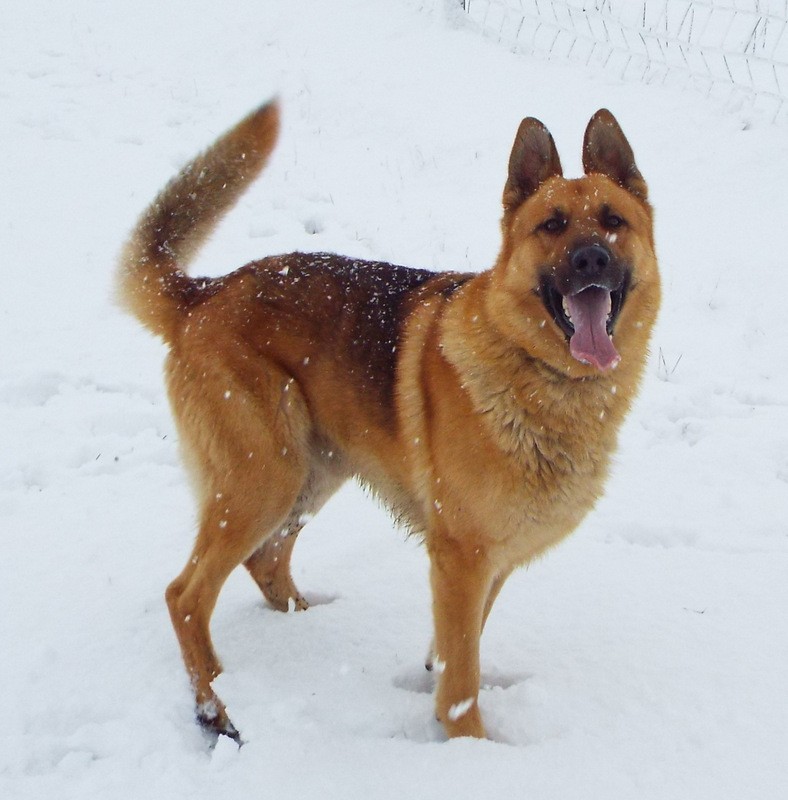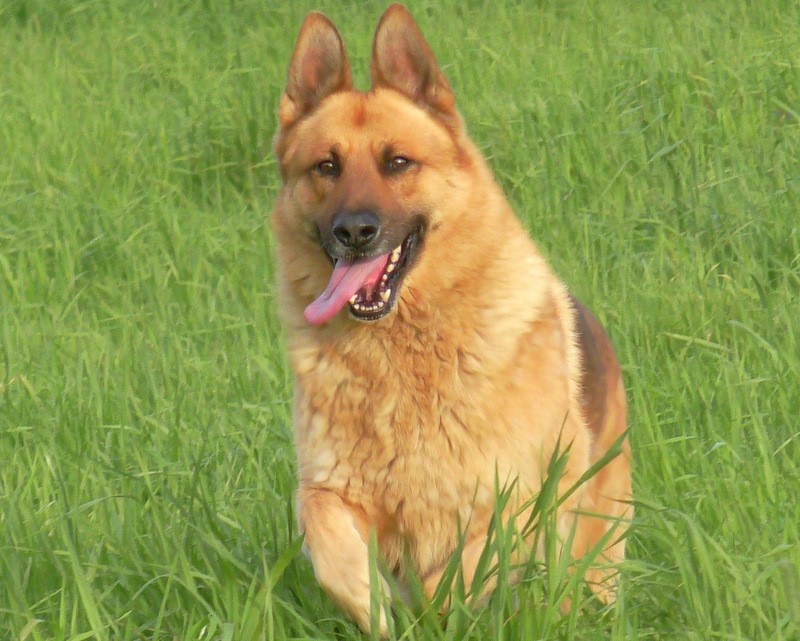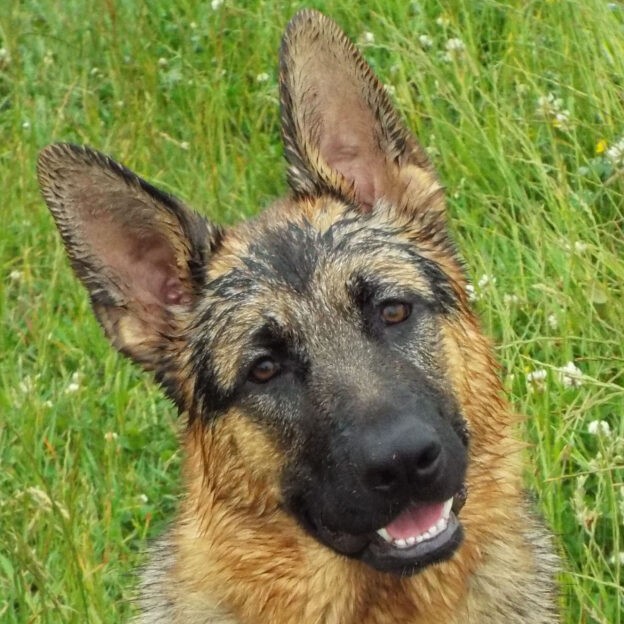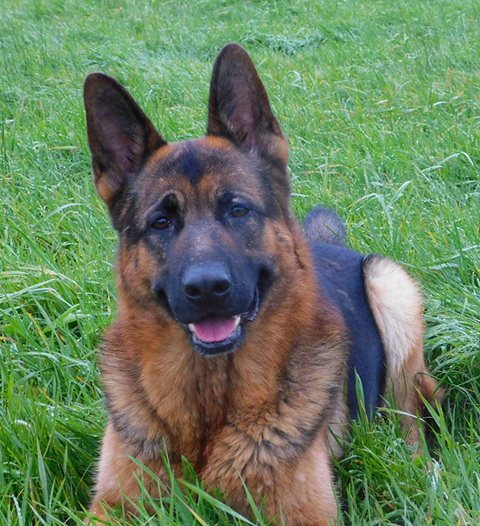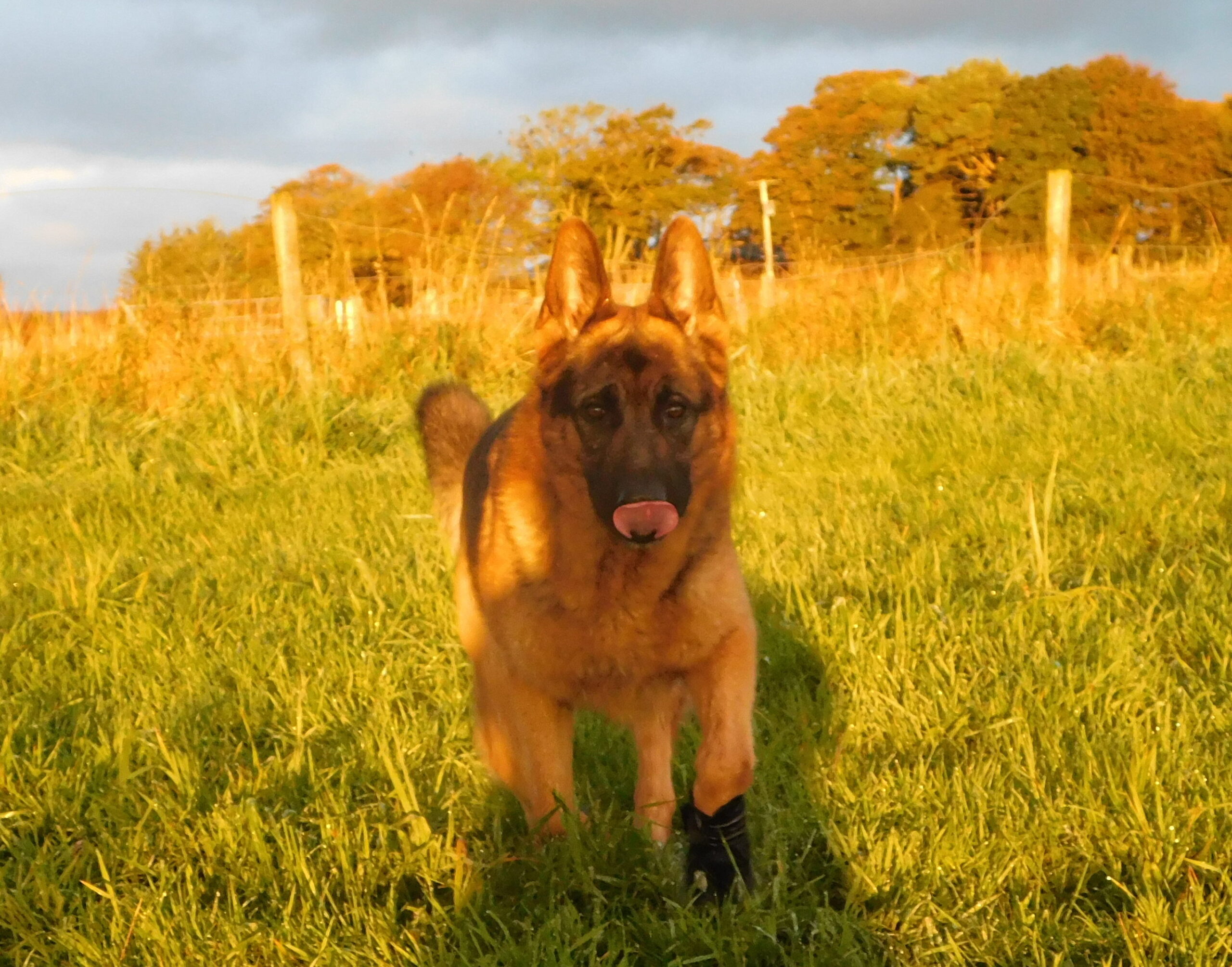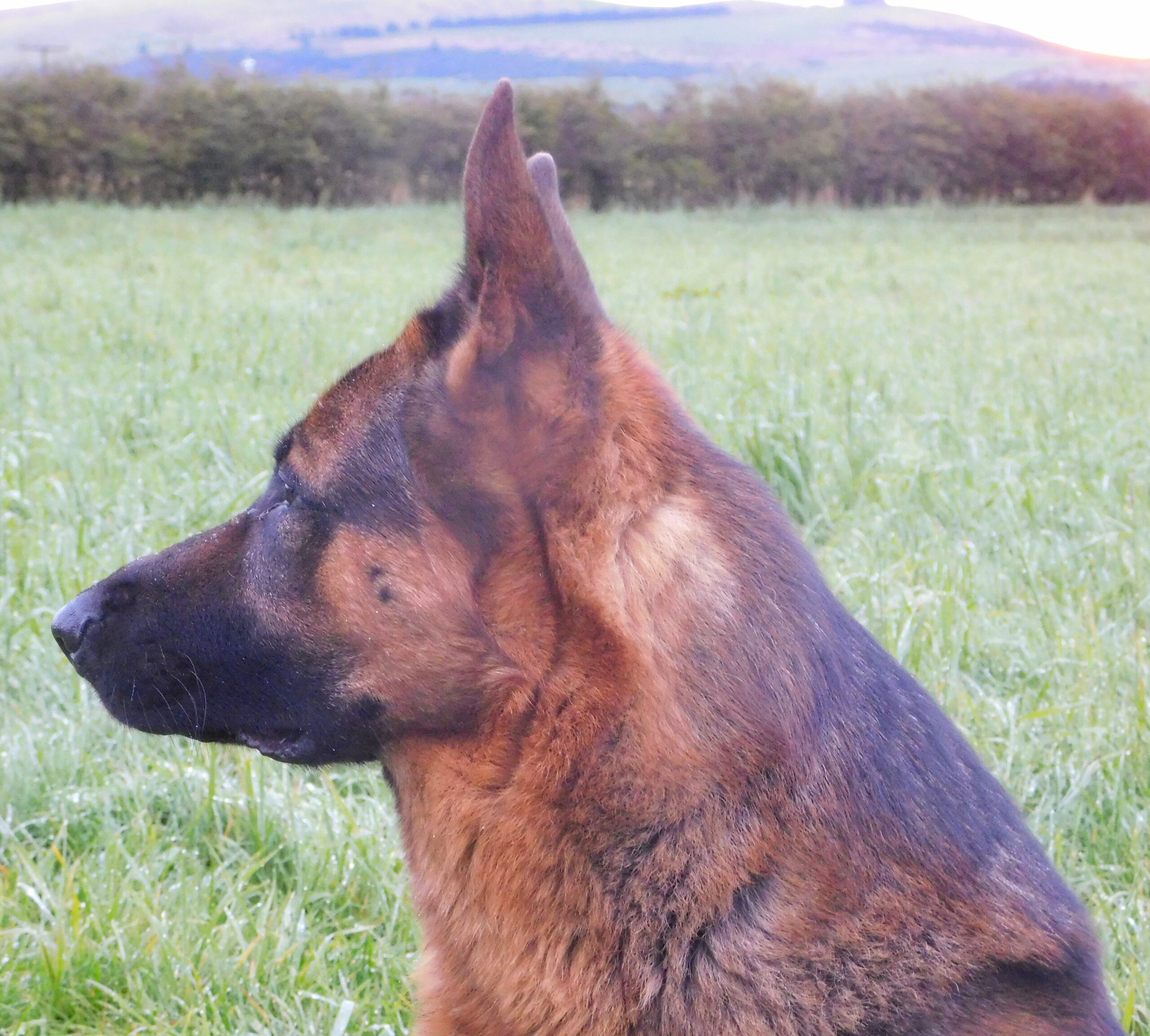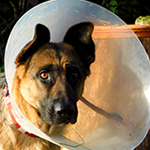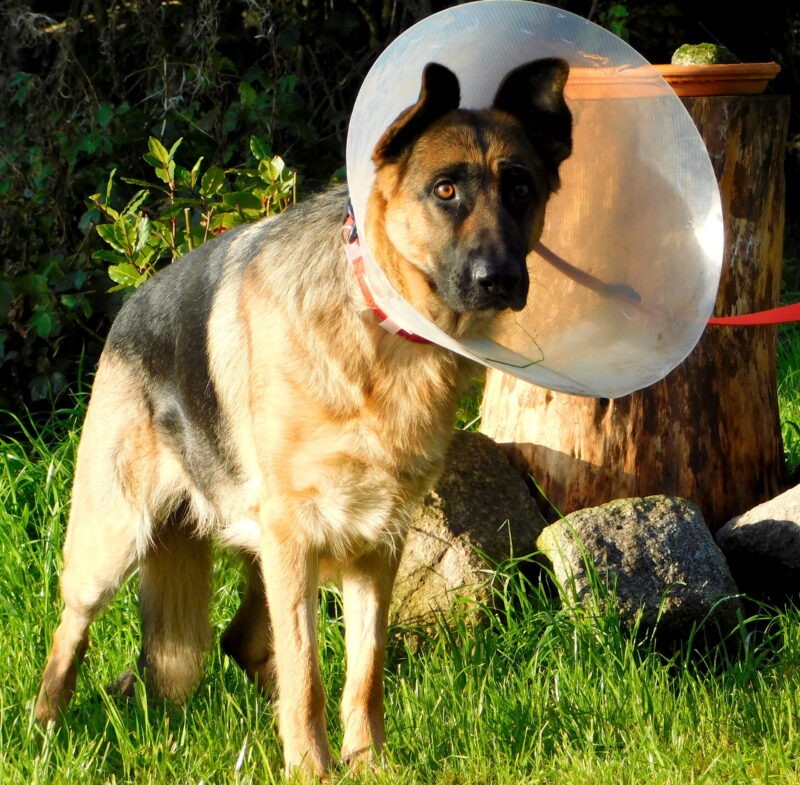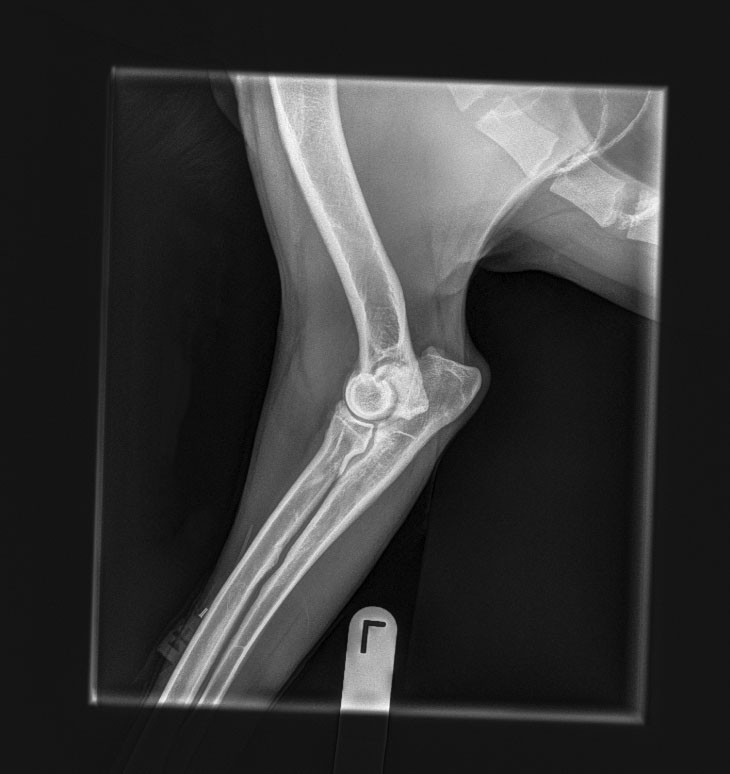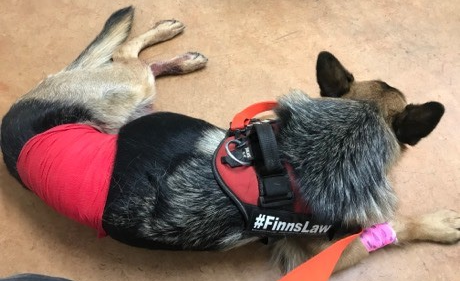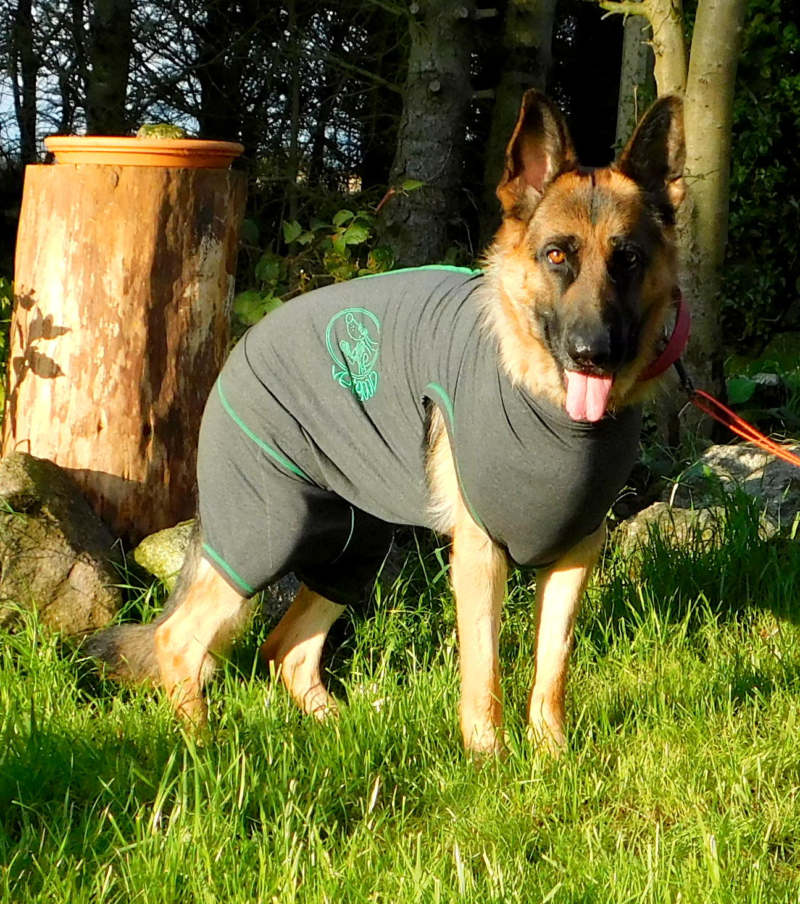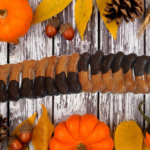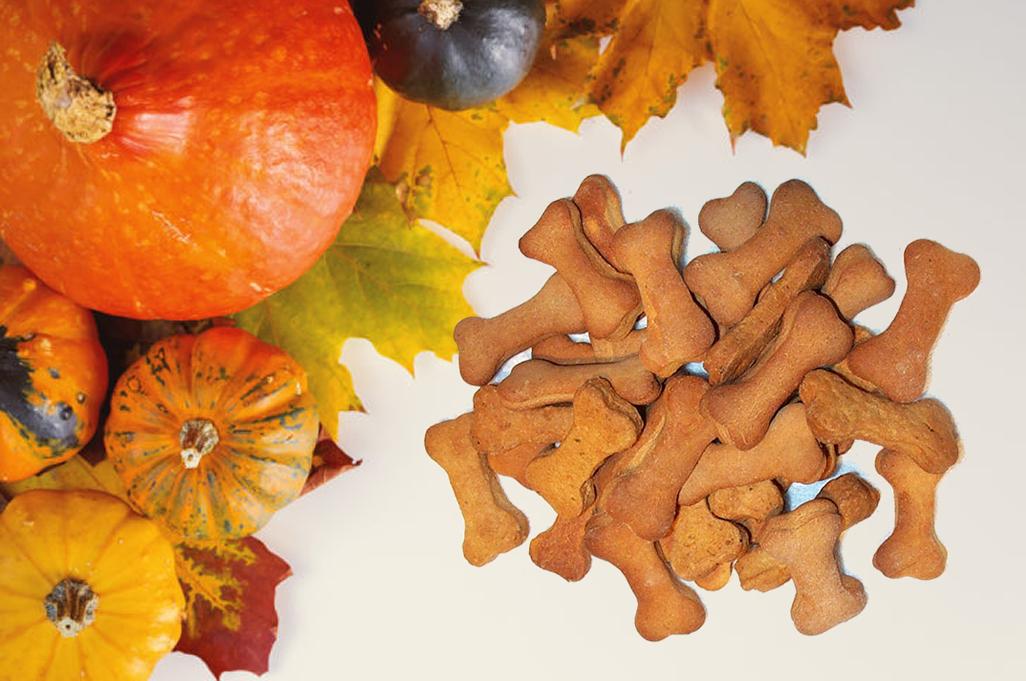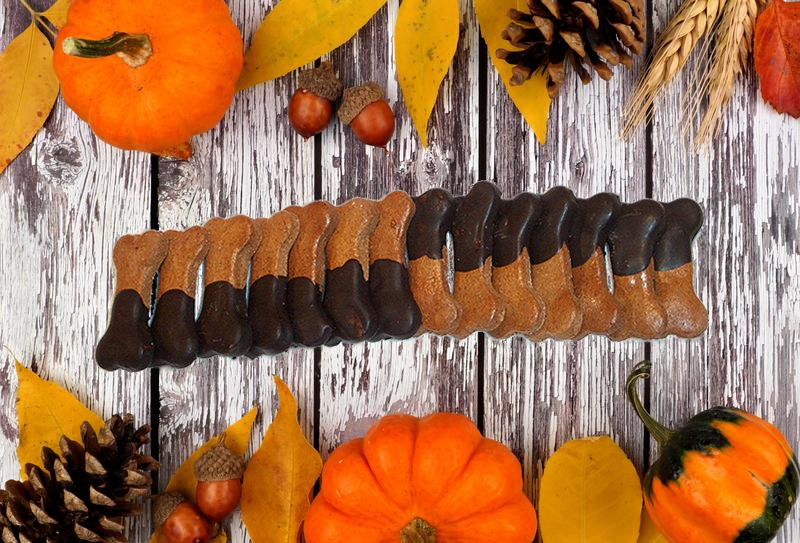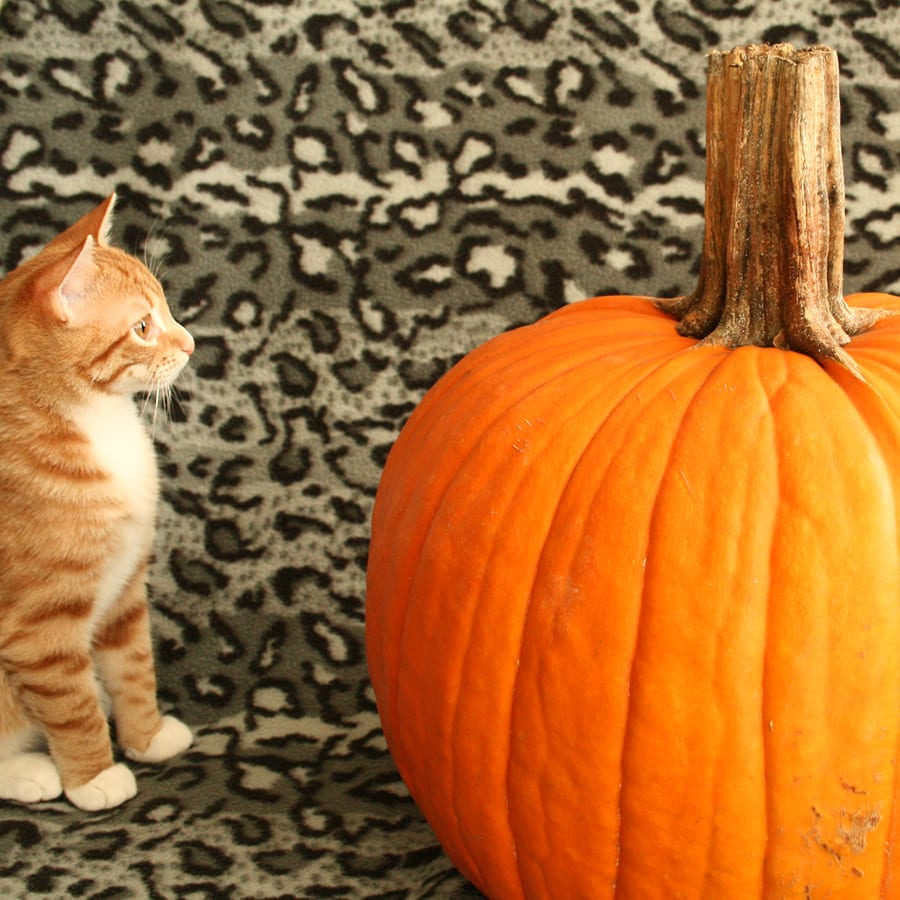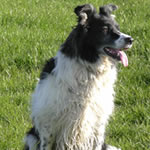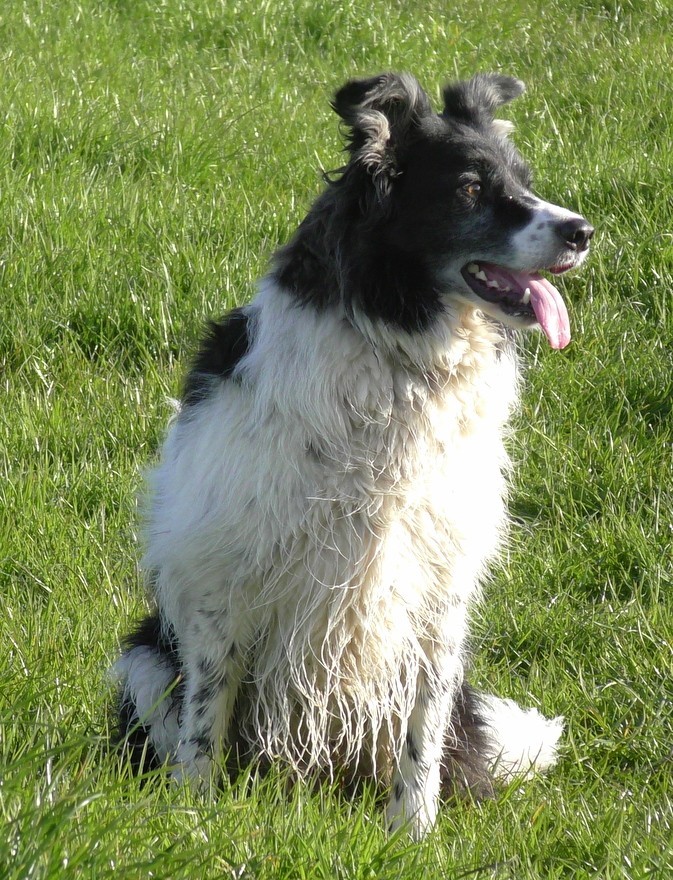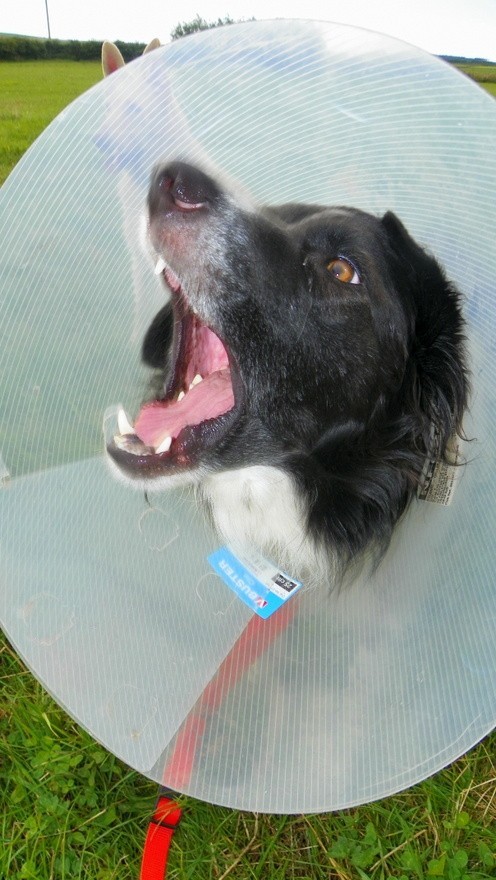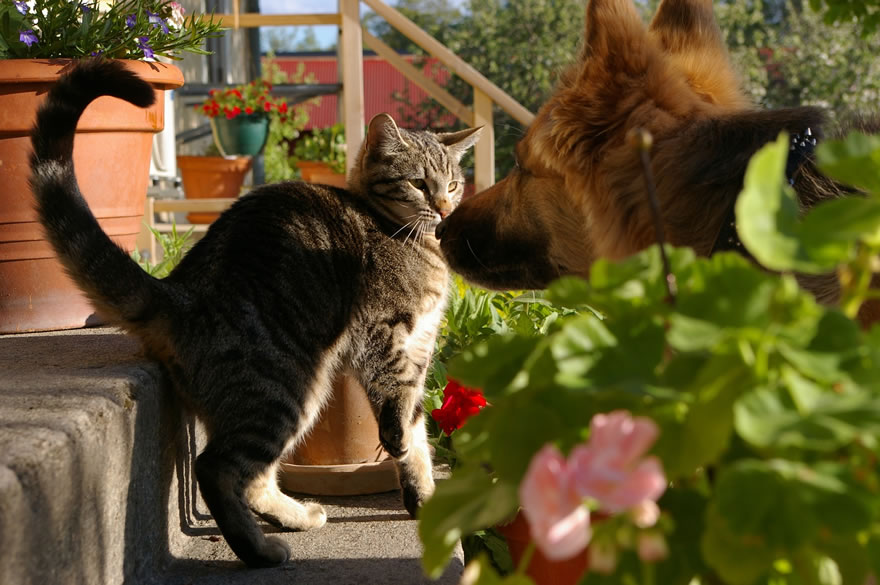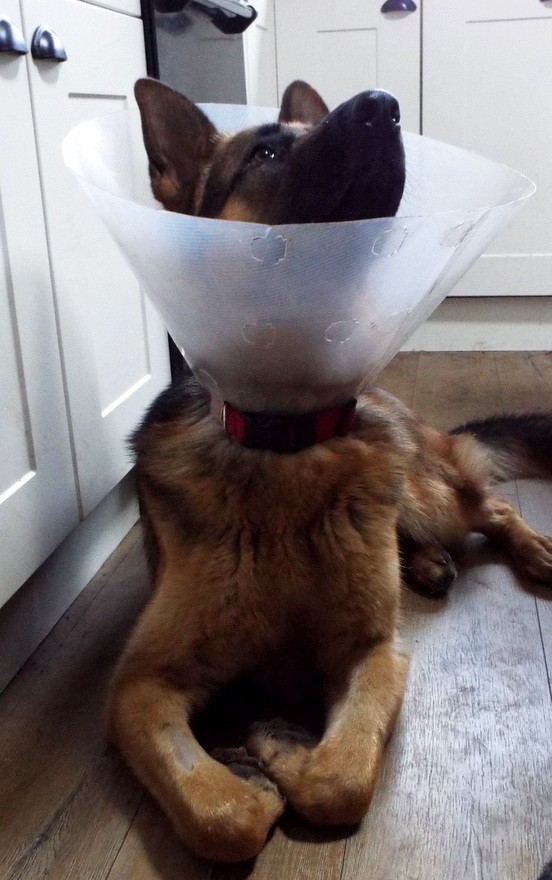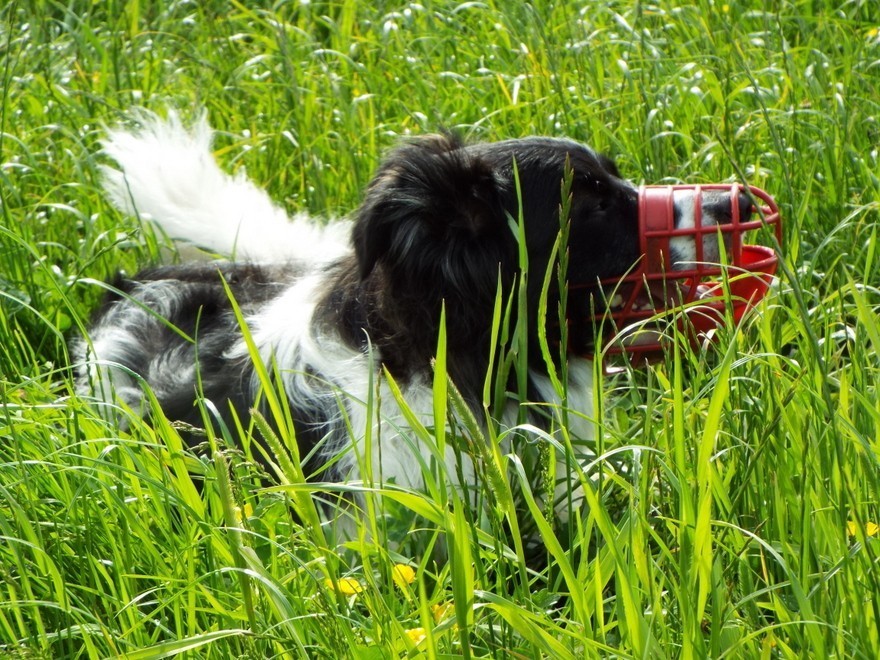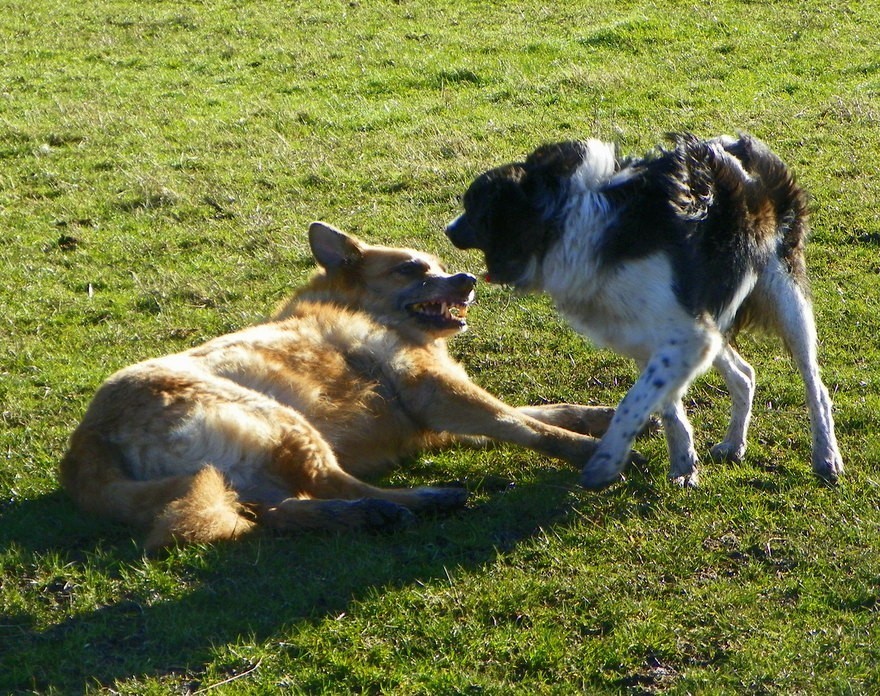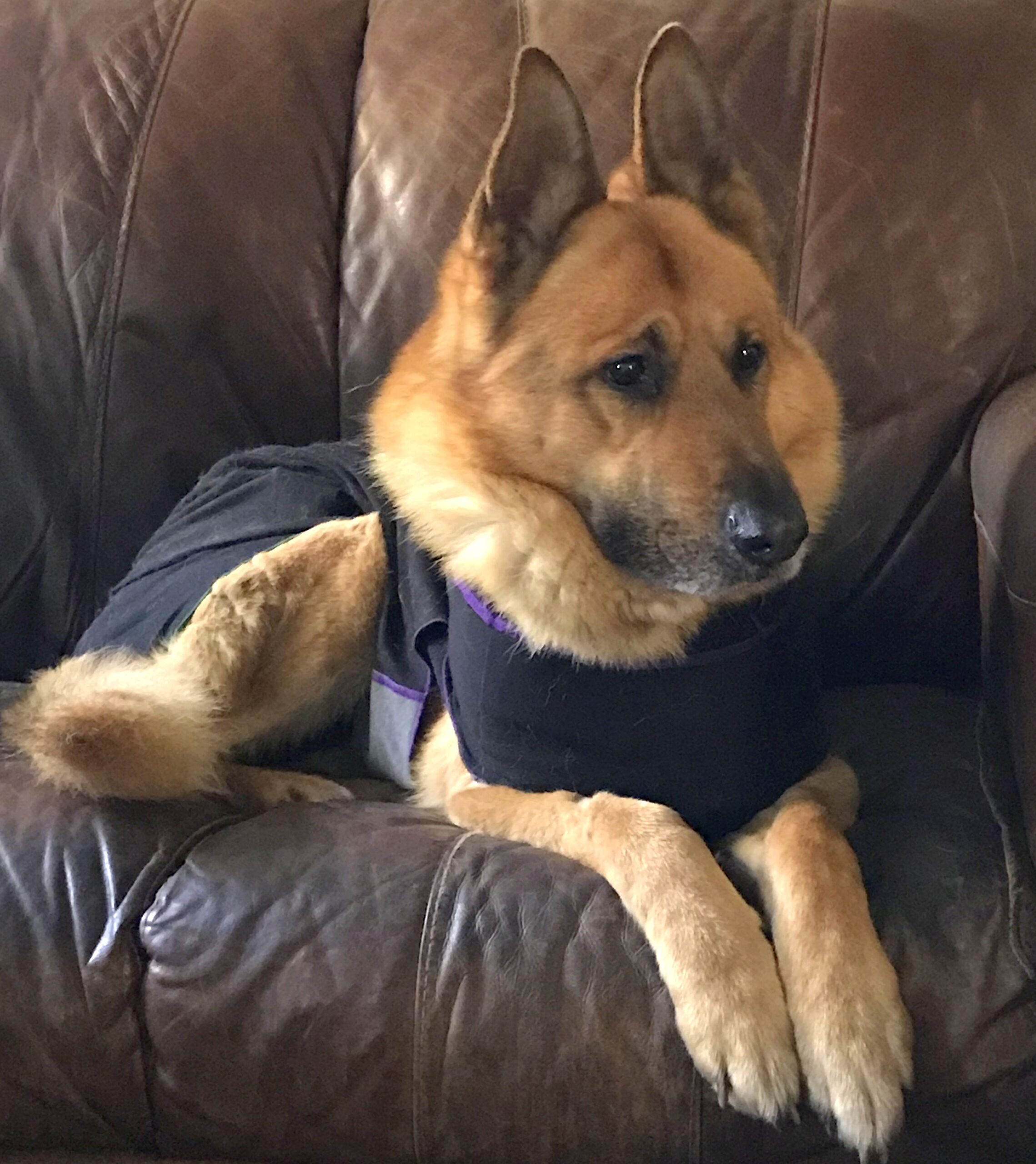
Archie in his Vetgood suit
A shock discovery
Last month we discovered a hard lump in one of Archie’s testicles. We got him to the vet as soon as possible, which wasn’t easy as there were so many vets off with COVID.
After examining him, the vet recommended castration with scrotal ablation to ensure that everything was removed. Our biggest fear was testicular cancer. We decided to proceed with the operation but then had to wait another three weeks for it to be performed, again because of COVID. As you can imagine, we were very worried about him. However, he seemed perfectly okay in himself. There were no signs of any illness at all.
Finally, the day came around. He had his op and was back home again in no time. The vet assured us that it had all been removed and samples had been sent off for testing. Another anxious week passed, waiting for the results.
Eventually, we found out that it was a seminoma and that the majority of seminomas are benign, plus the fact that we caught it early, so all the signs were good.
He has recovered very well and is now almost back to his usual exercise regime. We have made subtle changes to his diet, adding some supplements, which we hope will boost his immune system. He must now have his lymph nodes checked regularly.
Know the signs of testicular cancer in dogs
If you have an unneutered male dog, would you know what to look for? There is an excellent article on Checking your Dog for Testicular Cancer. It is well worth reading and speaking to your vet about it. In fact, it would be a good idea if whenever your unneutered male dog has his annual vaccine, the vet performed this simple check at the same time.
We’ve Got You Covered!
After the op, we thought he would be stuck in the Cone of Shame for a couple of weeks, but we opted instead to use one of our Vetgood Protective Medical Suits. This was an absolute godsend, and we had a relatively stress-free time, whilst ensuring he was fully covered – no scraped walls or bruised shins!
Medipaw boots and suits help dogs and cats recover from surgeries, injuries, and other wounds easily and comfortably.
Less Stress and Faster Recovery
Protective gear that provides maximum protection for a smoother, faster recovery all while keeping patients calm and stress-free.
Keep Healing Time on Track
High tech material safeguards wounds when life gets messy from outdoor elements and unwanted licking and scratching. Your pet’s bandages, wounds, and incisions stay clean and dry.
Comfort for Body and Sole
Protective boots and suits are designed for comfort and convenience so pets can easily eat, drink, sleep, and go outdoors.


